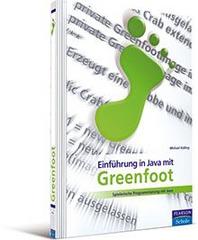 Do you remember the feeling when you were a kid and you had the fantastically rare chance to go into a sweet shop (or, as the Americans among us would probably say: candy store), and you actually had a bit of money, and you could buy something, and there was just so much choice? Wow.
Do you remember the feeling when you were a kid and you had the fantastically rare chance to go into a sweet shop (or, as the Americans among us would probably say: candy store), and you actually had a bit of money, and you could buy something, and there was just so much choice? Wow.
(I still get a similar feeling now – not so much with candy, but with chocolates. Hmmm, chocolate…)
This is what it seems like with educational programming software. Some ten years ago there was not very much around (at least not much that was in widespread use and had good resources), and now there is plenty. For a teacher of introductory programming, it’s a bit like being the kid in the sweet shop: So much here to look at, so much good stuff. But so hard to choose!
If you haven’t used any of the current educational programming environments before, it’s hard to get your head around what’s in them. Just like the well known box-of-chocolates problem. When I talk about Greenfoot, I often get the question “How does it compare to Scratch?” or “How is it different from Alice?”
To help a little with that situation, we organised a panel session at the last SIGCSE conference called Comparing Alice, Greenfoot and Scratch which compared these three environments. “We”, in this context, were Sally Fincher and Ian Utting who organised the session, and Steve Cooper (Alice), John Maloney (Scratch) and myself (Greenfoot) presenting the environments. I really enjoyed the session – it was great to get one of the leading people involved in each of the development teams to present the environments, and it was well received: the room was packed full and the feedback was good.
But panels are transient – no good record is available for those who were not there. So we are now working on a series of articles for a special issue of the Transactions on Computing Education doing the same in writing. They should be published together in a single issue later this year, and include a paper on each of the three environments and a discussion section where we talk about commonalities and differences.
To read it, you have to wait until it comes out. But as a teaser, here is a graphic that we made for the papers, showing the target age groups for each of the three systems.
Maybe this answers one of your questions already. For everything else, you’ll have to wait a little longer.



